Bovine Bolete / Summer / Autumn / Edible
Step into the enchanting world of forest foraging as we uncover the rustic charm and culinary delights of the Bovine Bolete, scientifically known as Suillus Bovinus.
In this blog post, we embark on a journey to discover the unique qualities of this beloved mushroom, celebrated for its earthy flavor and distinctive appearance. With its chestnut-brown cap and sponge-like pores, the Bovine Bolete captures the hearts of mushroom enthusiasts and food lovers alike. Join us as we explore the identification, habitat, and culinary applications of this delightful fungus, from its traditional use in hearty soups and stews to its versatility in vegetarian cuisine. Let’s embrace the rustic treasure of Suillus Bovinus, as we delve into the bountiful offerings of nature and savor the flavors that connect us to the forest floor.
Scientific Name
Suillus Bovinus
Common Names
Bovine Bolete, Jersey Cow fungus.
Family
Suillaceae
Habitat
Mycorrhizal with coniferous trees most often growing with Pine.
Description
Part of the wider Boletales order the Suillus species are mostly associated with Pines and other coniferous trees. The Bovine Bolete is an easy to identify mushroom.
Identifying Features for the Bovine Bolete:
Cap:
Yellow/Orange to brown, the caps tend to get light in colour towards the edge. The caps are wet or slimy to touch. Convex when young but they can flatten out with age.
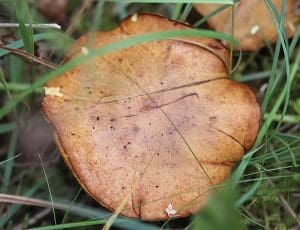
Stem:
More or less the same colour as the cap. Quite slender compared to other Boletes.
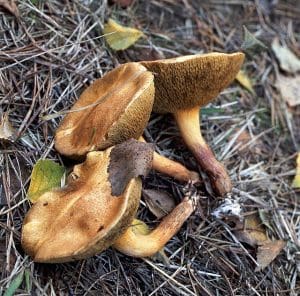
Gills:
Pores rather than gills, they are grey to yellow in colour. The tubes are angular.
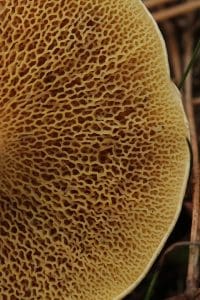
Smell:
Mushroomy.
Spores:
Olive green/brown
Uses
In food
They are not that highly regarded as they tend to be full of water. They are best dried and rehydrated or used for stocks. You can remove the slimy skin and pores which improves the texture but that leaves very little to eat.
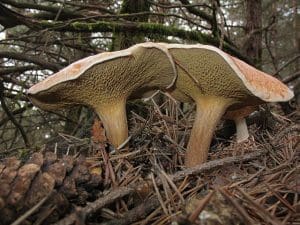
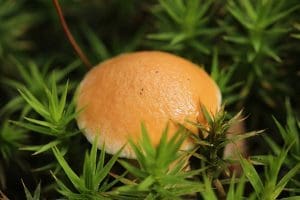
Harvesting
They are often infected with maggots and bugs so I always apply the ‘finger test.’ Press down on the top of the cap, if the flesh bounces back into shape they tend to be OK, if they don’t bounce back into shape or your finger goes through the flesh, they’re best left for the beasties.
Known hazards
None Known.
Potential lookalikes
This is a really safe and easy mushroom for beginners, other Suillus species can look similar for example the Larch Bolete (Suillus Grevillei) but they are all edible.
Extra Notes
The origin of the common name apparently comes from medieval knights, they loved a mushroom called the Yellow Knight (Tricholoma Equestre) – the yellow knight is currently (2022) a bit up for debate on edibility – which also grows with Pine and they ignored the Bovine Bolete as they considered them to only be fit for cattle drovers.






Leave a Reply
You must be logged in to post a comment.